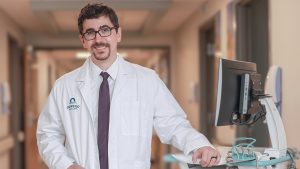SYRACUSE, N.Y. — The Milton J. Rubenstein Museum of Science & Technology (MOST) in Syracuse’s Armory Square will soon host an exhibit of the first images from NASA’s James Webb space telescope.
The exhibit will be available July 23 from 9:30 a.m. to 5:00 p.m. It’ll include 3D printed models, frames and panels of images, space activities, and NASA giveaways, the MOST said. The in-person event will be free with museum admission and open to the public.
The science museum is among hundreds of sites nationwide acknowledging the release of the first images from the telescope.
(Sponsored)

Fraud Contingencies Plans Are Essential
Your business likely has a disaster recovery plan in place—procedures for handling fires, natural disasters or other crises that could disrupt operations or endanger lives. While a fraud contingency plan

Protecting your family business is more than financial and estate planning
By Lindsay Usherwood General Counsel I want to roll back the title of Ask the Expert because I don’t believe anyone can be an expert in family business. It is
“We are thrilled that the MOST is an official host site for NASA’s James Webb Space Telescope community events celebrating Webb’s first stunning images,” Emily Stewart, senior director of education & curation, said. “As a STEM leader in the community, we hope to inspire and guide students through new topics in space and astronomy that may not otherwise have the opportunity to explore outside the MOST.”
STEM is short for science, technology, engineering, and mathematics. The MOST is located at 500 S. Franklin St. in Syracuse.
About the telescope
Webb is the “largest and most complex” space science telescope ever built, described as the “premier observatory of the next decade,” per the MOST’s announcement. The international mission, led by NASA in partnership with the European Space Agency and the Canadian Space Agency, launched on Dec. 25, 2021. After unfolding in space into its final form, Webb successfully arrived at its destination nearly 1 million miles from Earth and began preparing for science operations.
The observatory, which is designed to see the universe in the infrared, will “push the field of astronomy into a new era,” the MOST said.
Webb will be able to study light from distant parts of the universe for the very first time — the first galaxies that formed over 13.5 billion years ago — and give us insight into how our universe formed.
It will also peer into dusty stellar nurseries to explore distant worlds orbiting other stars, as well as observe objects in the solar system.
Webb will “extend the scientific discoveries” of other NASA missions like the Hubble Space Telescope, Chandra X-ray Observatory, and Transiting Exoplanet Survey Satellite, the MOST said.




